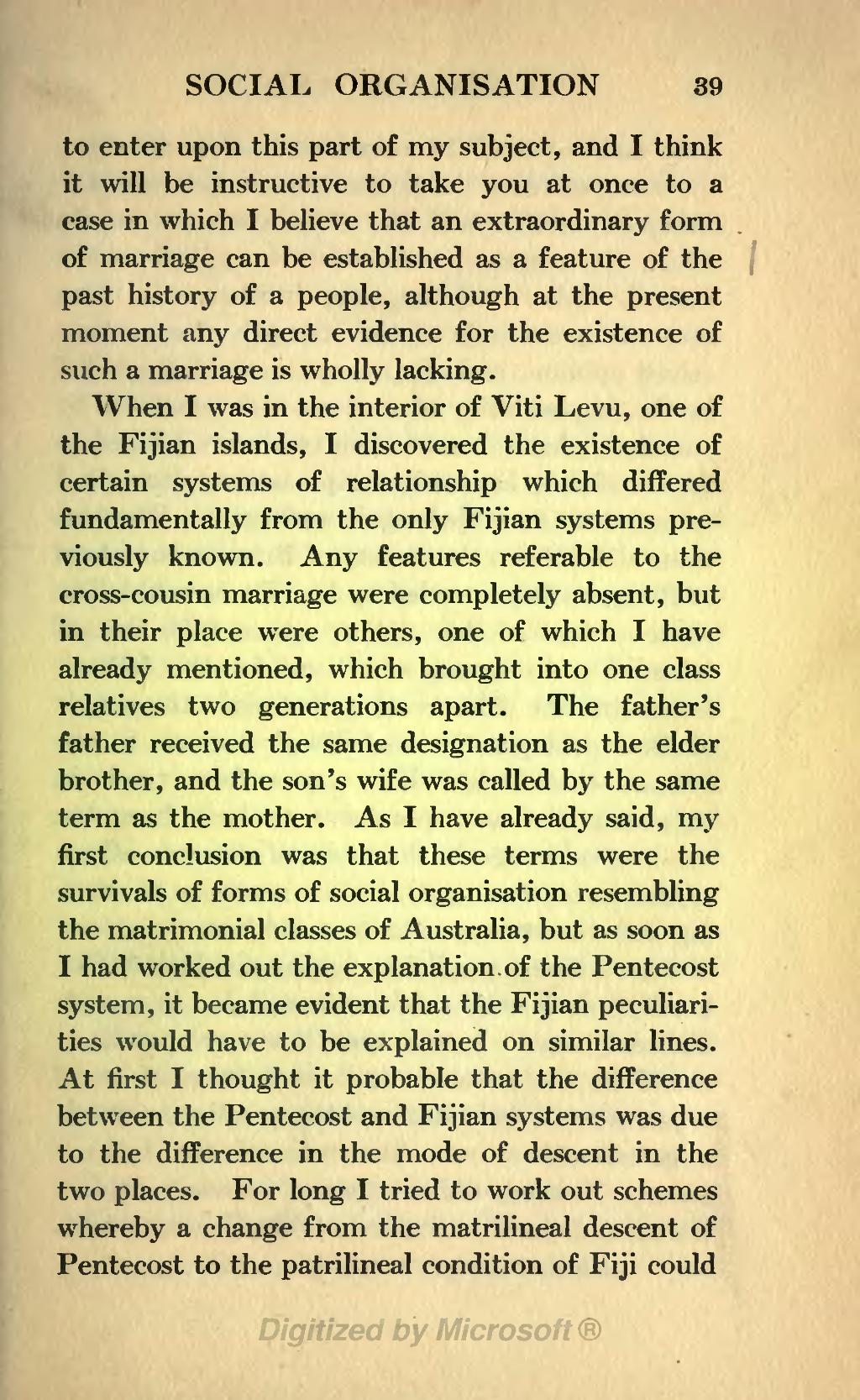to enter upon this part of my subject, and I think it will be instructive to take you at once to a case in which I believe that an extraordinary form of marriage can be established as a feature of the past history of a people, although at the present moment any direct evidence for the existence of such a marriage is wholly lacking.
When I was in the interior of Viti Levu, one of the Fijian islands, I discovered the existence of certain systems of relationship which differed fundamentally from the only Fijian systems previously known. Any features referable to the cross-cousin marriage were completely absent, but in their place were others, one of which I have already mentioned, which brought into one class relatives two generations apart. The father's father received the same designation as the elder brother, and the son's wife was called by the same term as the mother. As I have already said, my first conclusion was that these terms were the survivals of forms of social organisation resembling the matrimonial classes of Australia, but as soon as I had worked out the explanation of the Pentecost system, it became evident that the Fijian peculiarities would have to be explained on similar lines. At first I thought it probable that the difference between the Pentecost and Fijian systems was due to the difference in the mode of descent in the two places. For long I tried to work out schemes whereby a change from the matrilineal descent of Pentecost to the patrilineal condition of Fiji could
